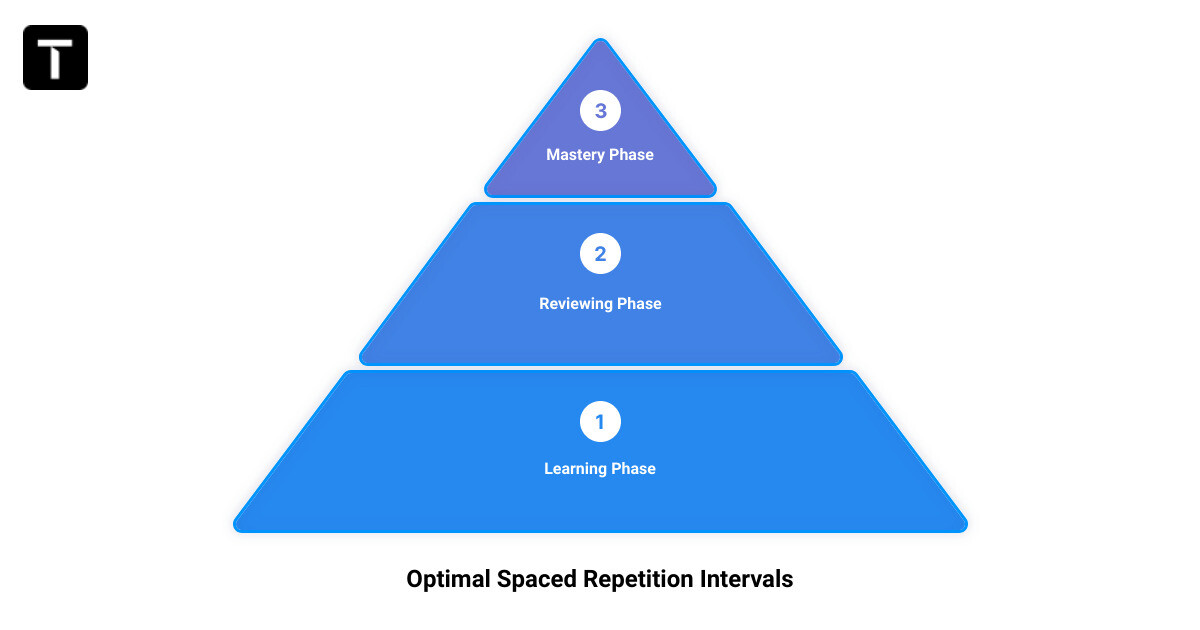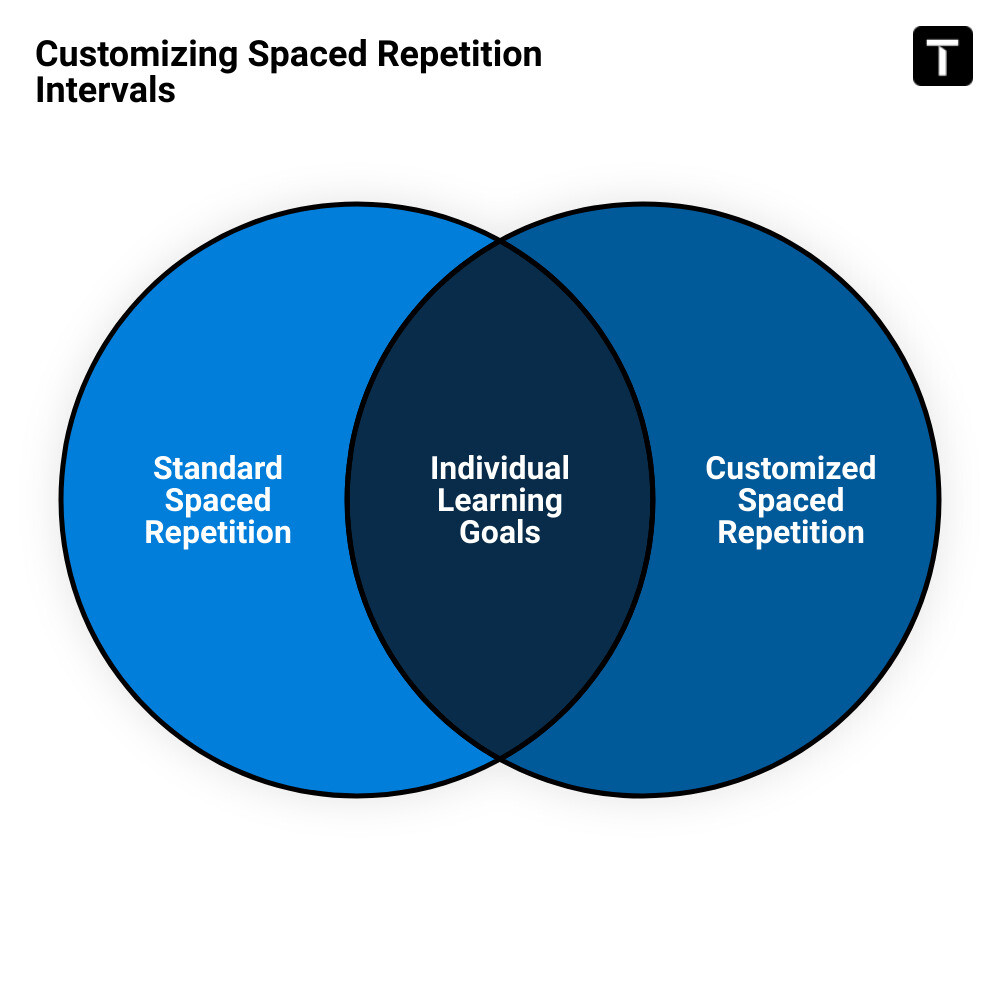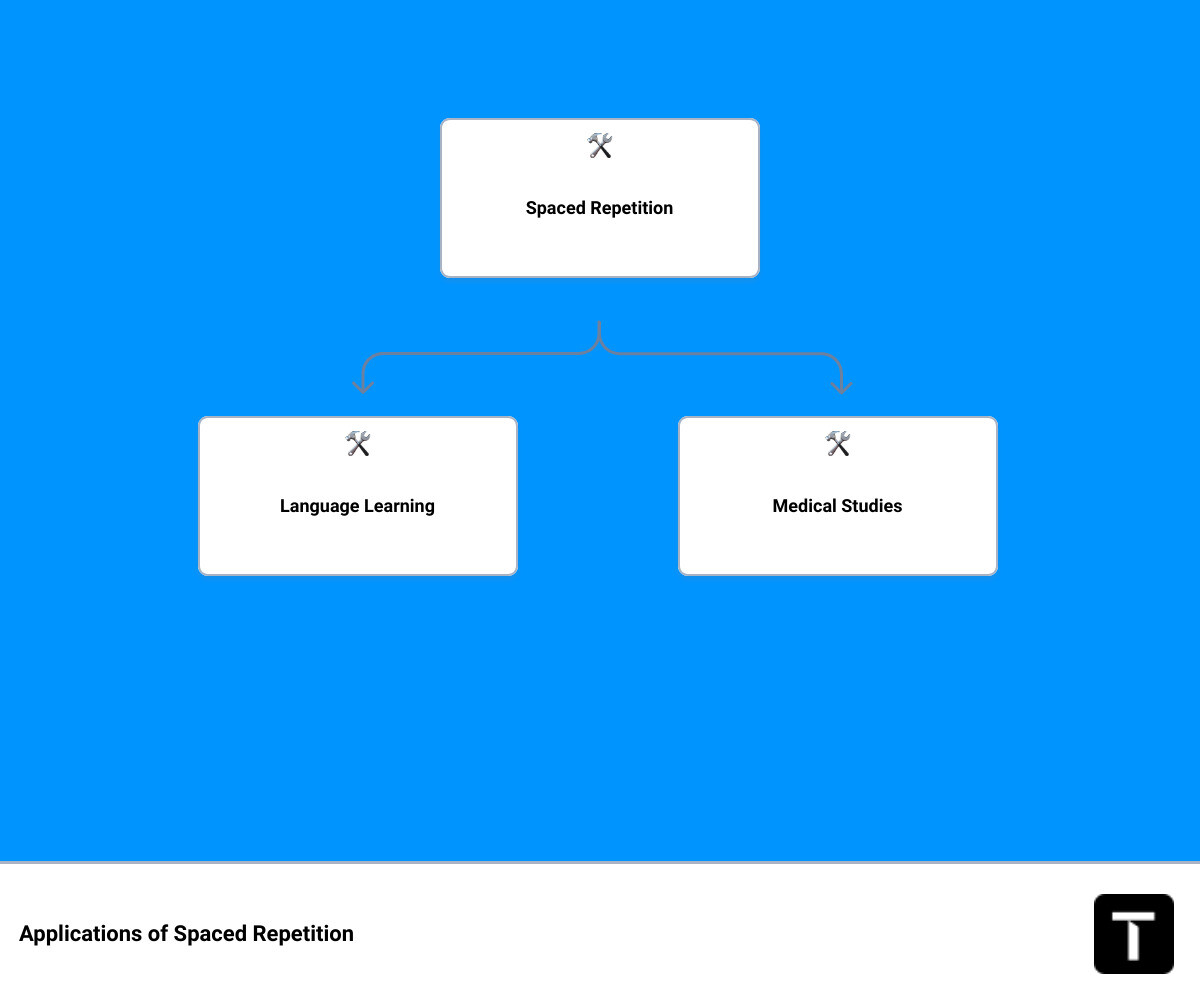Introduction to Spaced Repetition
Imagine being able to remember crucial information months, or even years, after first learning it. Enter spaced repetition, a scientifically-backed learning technique that can supercharge your memory retention. This powerful method is at the heart of the Traverse app, helping aspiring Mandarin learners like you to memorize thousands of characters and vocabulary with ease.
Spaced repetition, in its essence, is a practice of reviewing learned information at gradually increasing intervals. The genius of this approach lies in its alignment with our brain's natural forgetting curve, enabling us to recall more by revisiting the material just before we're about to forget it. This method goes beyond mere rote memorization, focusing on strategic timing and repetition to embed information deep into our long-term memory.
In the upcoming sections, we'll explore the concept of optimal spaced repetition intervals, delve into the science behind memory retention, and discuss how Traverse enhances this learning process. We'll also look at ways to customize spaced repetition intervals to meet individual learning goals, and share some practical applications in different fields, from language learning to medical studies.
Whether you're a lifelong learner on the quest to master Mandarin, or simply someone interested in the cognitive science behind effective learning, understanding and utilizing spaced repetition can revolutionize your learning journey. So, let's dive into the world of spaced repetition and discover how to make your learning process more efficient, effective, and enduring.

Understanding the Concept of Optimal Spaced Repetition Intervals
Imagine your memory as a leaky bucket. Every time you learn something new, it's like pouring water into this bucket. However, with time, the water starts to leak out — in other words, you start to forget. But what if you could slow down this leakage? What if you could retain that information longer and more effectively? This is where the practice of spaced repetition comes into play, specifically the concept of optimal spaced repetition intervals.
Spaced repetition is the process of reviewing learned material at increasing time intervals. It's a technique that exploits our brain's natural forgetting curve to maximize memory retention. But finding the most effective time intervals, the so-called 'optimal spaced repetition intervals', is a subject of ongoing research and debate.
The Optimal Interval: A Question of Balance
The 'optimal' spaced repetition interval is the time span that strikes the perfect balance between efficiency and effectiveness. It's long enough to challenge your memory (thus strengthening it) but short enough to ensure that the information hasn't been completely forgotten.
While there's no one-size-fits-all answer to what these intervals should be, research suggests a typical schedule of increasing intervals: starting with a repetition 1 day after the initial learning session, followed by repetitions 7 days, 16 days, 35 days, and so on after the initial session. This schedule is not set in stone, but it's a great starting point for most learners.
However, as a lifelong learner, it's essential to understand that these optimal intervals depend heavily on the complexity of the material, your familiarity with the subject, and your personal memory strength. For example, if you're learning Mandarin characters, which are visually complex and likely unfamiliar, you might benefit from shorter initial intervals.
The Science Behind Optimal Intervals
When we learn something new, our brain creates a memory trace. This trace gradually weakens over time if there's no attempt to reinforce it — a phenomenon known as the forgetting curve. However, every time we actively recall that information (for example, by reviewing flashcards), we strengthen this memory trace and slow down the forgetting process.
Now, here's where the spacing effect comes into play. The spacing effect is a psychological principle stating that we learn more effectively when our study sessions are spread out over time. So by strategically spacing out our reviews (using spaced repetition intervals), we can slow down the forgetting curve and retain more information in the long run.
But remember, while finding the perfect spaced repetition interval may seem like the holy grail of efficient learning, the real benefit comes from the combination of active testing and spaced review sessions. So whether you're trying to master Mandarin or any other complex subject, remember to keep testing yourself regularly and review your material at progressively longer intervals. Happy learning!
The Science Behind Spaced Repetition and Memory Retention
Just as a gardener waters their plants at regular intervals to ensure optimal growth, our brains too require regular 'watering' of information to keep our memory 'plants' flourishing. The science behind spaced repetition and memory retention is rooted in the principles of cognitive science and psychology.
The Ebbinghaus Forgetting Curve
In the 19th century, psychologist Hermann Ebbinghaus developed the concept of the Forgetting Curve. This curve illustrates how our memory of new information decays quickly at first and then levels off over time. It's a sobering reminder of our brain's natural tendency to forget. But worry not, as spaced repetition presents a solution. By revisiting the material just before you're about to forget it, you can 'reset' the Forgetting Curve and slow down memory decay. Each review strengthens the memory, extending the time it takes for the information to fade.
The Spacing Effect
Another pivotal principle in understanding the efficacy of spaced repetition is the Spacing Effect. It suggests that our brains learn more effectively when we spread out our study sessions over time, rather than cramming everything into one marathon session. It's akin to allowing the mental 'mortar' to dry, solidifying new knowledge and making the learning process more effective. This concept is closely linked with the idea of desirable difficulty, which proposes that learning is most effective when it's challenging, but not too hard. Spaced repetition, with gradually increasing review intervals, provides just the right balance of challenge to keep our brains engaged and our learning optimized.
Storage Strength and Retrieval Strength
Finally, let's delve into the dual strength theory. This theory posits that memories have two strengths: storage strength and retrieval strength. Storage strength refers to how well information is embedded in our memory. It doesn't fade over time and can only be increased through repeated recall or use. Retrieval strength, on the other hand, pertains to how easily we can access that memory. Unlike storage strength, it does fade over time unless maintained through regular recall.
In the context of learning Mandarin or any other subject, understanding these principles allows us to appreciate the true power of spaced repetition. The science of spaced repetition shows us not only how to learn but also how to retain information effectively for longer periods. As lifelong learners, harnessing these principles can transform the way we absorb and remember information, making every study session a step toward efficient, long-term learning.
The Role of Discipline and Consistency in Spaced Repetition
Unlocking the true power of spaced repetition requires more than just understanding the science behind it; it calls for discipline and consistency. Just as a muscle needs regular exercise to maintain its strength, our brains require consistent encounters with information to enhance long-term memory retention.
The Importance of Regular Review Sessions
Spaced repetition is a marathon, not a sprint. It's not about cramming as much information as possible in one sitting, but rather about pacing oneself and revisiting the material at specific intervals. Conducting regular review sessions is crucial in this learning method. The more frequently you retrieve the information, the stronger your retrieval paths become, solidifying the information in your long-term memory.
However, these review sessions should not be conducted at random. They should follow a specific schedule based on evidence-based learning techniques. A recommended schedule, as suggested by Dr. Piotr Wozniak, the developer of the first computer algorithm for spaced repetition, is 1 day, 7 days, 16 days, and 35 days after the initial learning session. By adhering to such a schedule, you engage your brain with the information in a way that promotes long-term memorization.
The Power of Discipline and Consistency
Being disciplined in your learning schedule is paramount for the success of spaced repetition. This means sticking to your review sessions even on days when you feel less motivated. Remember, the goal is to engage your brain continually with the information to promote long-term memorization.
Equally important is consistency. The beauty of spaced repetition lies in its flexibility. If the suggested schedule doesn't work for you, feel free to tweak it to fit your personal learning style and the demands of the material you're studying. What matters is that you maintain consistent intervals between your study sessions.
In conclusion, while spaced repetition leverages cognitive science to enhance memory retention, your discipline and consistency in applying this method play a significant role in determining its effectiveness. So, stay committed to your study schedule, and over time, you'll witness a dramatic improvement in your ability to retain and recall information.
Traditional and Modern Tools for Spaced Repetition
Building on the importance of discipline and consistency in successful spaced repetition, let's now dive into the tools that can facilitate this process. From traditional paper flashcards to modern software solutions such as Anki and Traverse, the choice of tools plays a crucial role in the efficiency and effectiveness of your spaced repetition learning.
Using Paper Flash Cards for Spaced Repetition
In the realm of traditional tools, paper flashcards stand out as a tried-and-tested method for learning. This interactive cramming method predates computers and is as simple as it gets: a question or cue on one side of a card and the answer on the other. Paper flashcards are versatile, suitable for any type of information that fits on a small piece of paper, like vocabulary, history dates, or geography facts.
However, for paper flashcards to be truly efficient in spaced repetition, diligence is required. Each time you get an answer right, without hesitation, you mark a plus (+) on the card. If you get it wrong, you mark a minus (-). Cards with a plus go into a deck for revision the next day (within those 24 hours), while cards with a minus require immediate and frequent repetition. The goal is to get three pluses without breaking the cycle. This method ensures you know when to revise and keeps you honest about your progress.
Using Software like Anki and Traverse for Spaced Repetition
While paper flashcards have their merits, the digital revolution has introduced more efficient tools for spaced repetition. Spaced Repetition Software (SRS) like Anki and Traverse offer modern, tech-savvy learners a convenient and streamlined learning experience.
Anki, a classic choice for spaced repetition practice, is especially popular among medical students. It uses an adaptation of the SM-2 algorithm and offers extensive support for grouping and tagging flashcards. However, its interface is outdated and the app has a steep learning curve. Moreover, relying solely on Anki can lead to a superficial understanding of the material and potential burnout from constant repetition. It's essential to supplement Anki with other learning techniques for a well-rounded study routine.
On the other hand, Traverse combines the power of spaced repetition with the convenience of modern technology in a user-friendly platform. It not only provides an efficient flashcard system but also features a visually organized mind map that aids in encoding information and understanding complex concepts. An added advantage is the option to import Anki decks into Traverse, making the transition to this modern tool seamless and hassle-free.
In conclusion, while the choice between traditional and modern tools ultimately depends on personal preference and learning style, it's evident that software solutions offer a more efficient and comprehensive approach to spaced repetition.
How Traverse Enhances Spaced Repetition Learning
Revolutionizing the learning landscape, Traverse takes the power of spaced repetition and supercharges it with a unique blend of intelligent features. It's not simply about memorizing information, but achieving a deep, comprehensive understanding of complex subjects.
Traverse's Unique Features for Spaced Repetition
One aspect that sets Traverse apart is its integration of mind mapping, advanced note-taking, and flexible spaced repetition flashcards. This amalgamation of methodologies provides a dynamic learning experience, allowing you to visualize, digest, and retain information more effectively[^4^].
At the heart of Traverse's functionality is the principle of active recall, which is backed by cognitive science. The customizable flashcards facilitate repeated exposure to information at optimal intervals, significantly enhancing long-term memory retention[^4^].
But Traverse goes beyond mere repetition. Its robust mind mapping features and advanced note-taking capabilities empower you to delve deeper into complex topics. You can create and manage directional links, utilize color-coding for easy visual identification, and even write equations using Latex[^4^].
Importing Anki Decks into Traverse for Continued Learning
Traverse understands that many learners have been using Anki, a popular spaced repetition software. To ensure that your previous learning efforts aren't wasted, Traverse provides a seamless transition by allowing you to import your Anki decks[^4^]. This feature ensures that you can continue to build on the foundation you've already laid, but now with a more sophisticated and powerful tool at your disposal[^4^].
Traverse's Partnership with Mandarin Blueprint for Mandarin Learners
For Mandarin learners, Traverse's strategic partnership with Mandarin Blueprint presents an exciting development. By integrating visual mnemonics, mind mapping, and SRS flashcards, this collaboration offers an immersive experience that goes beyond mere vocabulary[^4^].
Mandarin Blueprint, an acclaimed platform for its effective Mandarin learning approach, joins forces with the advanced technology of Traverse. This partnership creates a powerhouse for Mandarin language learners, making mastering Chinese characters a breeze[^4^].
In conclusion, Traverse offers the ultimate platform for spaced repetition, providing learners with the tools they need to master complex subjects efficiently and effectively. Whether you're learning Mandarin, diving into machine learning, or studying for medical exams, Traverse is your go-to tool for success[^4^].
Stay tuned for the next section where we'll explore how to customize spaced repetition intervals for individual learning goals with Traverse.

Customizing Spaced Repetition Intervals for Individual Learning Goals
Ready to explore an educational treasure map tailor-made for your brain? Let's set sail. Customizing your spaced repetition intervals isn't a one-size-fits-all affair. It’s about understanding your learning needs and adapting your schedule to meet them.
The Power of Personalization
Dr. Piotr Wozniak, the pioneer behind the first computer algorithm for spaced repetition, recommends a progression of increasing intervals for optimal retention[^1^]. Starting with a repetition on Day 1, the schedule proceeds to a second repetition seven days later, a third repetition after 16 days, and finally, a fourth repetition 35 days after the initial session. Sounds simple, right? But here's the twist: this is a suggested schedule and may need to be adjusted based on your personal learning style and the nature of the material you're studying[^1^].
Adjusting Intervals for Exam Preparation
If you're gearing up for an exam, consider adjusting the intervals to fit the time you have available. Start by identifying high-yield material that is most likely to appear on the test and give it prime real estate in your schedule[^1^]. You could kick off with a few hours between reviews, gradually increasing to daily reviews, and then every few days as the exam looms closer.
Tailoring Intervals for Language Learning
For those diving into the depths of a new language like Mandarin, consider adopting Pimsleur's intervals[^1^]. These intervals start from as little as 5 seconds and can stretch up to 2 years, depending on the complexity of the language and your familiarity with it. This gradual progression and continual reinforcement can be a powerful ally in your language learning journey.
Balancing Spaced Repetition with Other Learning Strategies
Remember, while spaced repetition is a potent tool in your learning toolbox, it's important to balance it with other evidence-based learning strategies[^1^]. Initial learning, where you make logical sense of the material, can significantly reduce the number of repetitions needed to master the material. Also, consider interleaving related topics in your study plan. This strategy can help reinforce your understanding and improve your ability to apply the information in various contexts[^1^].
The key to successful learning isn't cramming — it's consistent, spaced-out repetitions over time. By carefully crafting and adhering to your optimal spaced repetition schedule, you can train your brain to retain information for longer periods and excel in your learning journey.

Practical Application of Spaced Repetition in Different Fields
Imagine having the ability to retain vast amounts of knowledge in various domains, from learning a new language to mastering complex concepts in medical studies. Spaced repetition, a potent tool, can make this a reality. Let's delve into how this cognitive science-backed method can be a game-changer in different learning arenas.
Spaced Repetition in Language Learning
Learning a new language, such as Mandarin, can be challenging, especially when it comes to vocabulary acquisition. Spaced repetition can be your secret weapon in this daunting task. For example, after you first learn a Mandarin character like "你" (meaning "you"), spaced repetition schedules it for review in a day. If you remember it, then the next review might be in three days, then seven days, and so forth. With each successful review, the interval extends, ensuring the character is etched deeper into your long-term memory with minimal effort. This algorithmic approach is not just effective, but also efficient, making spaced repetition an invaluable tool for language learners.
Spaced Repetition in Medical Studies
The medical field is another arena where spaced repetition can prove highly beneficial. Medical students often have to master vast amounts of complex material, ranging from understanding intricate biological processes to memorizing numerous medical terms. Spaced repetition aids in reinforcing this knowledge over time. By reviewing critical concepts just before they're about to fade from memory, you reset the forgetting curve to 100% and slow down the decay. This process not only enhances longer retention of the information but also keeps the knowledge fresh and readily accessible.
In conclusion, whether you're an aspiring polyglot tackling Mandarin or a medical student grappling with complex concepts, spaced repetition can be your ally for enhanced learning efficiency and effectiveness. Remember, the key lies in discipline and consistency. Happy learning!
Conclusion: Finding Your Optimal Spaced Repetition Interval
Finding your optimal spaced repetition interval is like discovering the secret sauce of your learning process. It's not a one-size-fits-all solution, but a personalized approach that caters to your learning style, familiarity with the subject matter, and even your upcoming academic commitments.
The magic of spaced repetition lies in the optimized, increasing time intervals between your study sessions. The optimal intervals, as highlighted by various studies, typically start with the first repetition within 24 hours of initial learning, followed by subsequent repetitions spread across weeks and months. This spaced approach has been proven to be 74% more effective than cramming, making it a powerful tool in your learning arsenal.
However, it's not just about the intervals. To fully unlock the benefits of spaced repetition, you need to combine it with active recall and encoding techniques. Making sense of the material during the initial learning and actively testing your knowledge throughout your study sessions can significantly boost your retention rate.
Apps like Traverse can ease your spaced repetition journey by removing the burden of planning and scheduling. With Traverse, you get to focus on the actual content, secure in the knowledge that the system is working to optimize your retention through scientifically-backed intervals. It also provides a balanced mix of new and old learning material, keeping your learning journey both challenging and engaging.
Remember, the optimization of your spaced repetition schedule is a dynamic process. Feel free to tweak the intervals based on your familiarity with the topic and your academic demands. For example, if you're already comfortable with certain Mandarin characters, you might want to start with longer intervals for those, while dedicating shorter intervals and more time to new or challenging characters.
In the end, the goal of finding your optimal spaced repetition interval is to create a more efficient and personalized learning experience. It's about mastering the material, not just memorizing it. So, embrace the science of spaced repetition, tailor it to your needs, and watch as your learning journey transforms into an exciting exploration of knowledge retention.
Remember, your learning journey is unique, and your optimal spaced repetition interval is just waiting to be discovered. With determination, discipline, and the right tools, you are set to conquer your learning goals, one repetition at a time!

